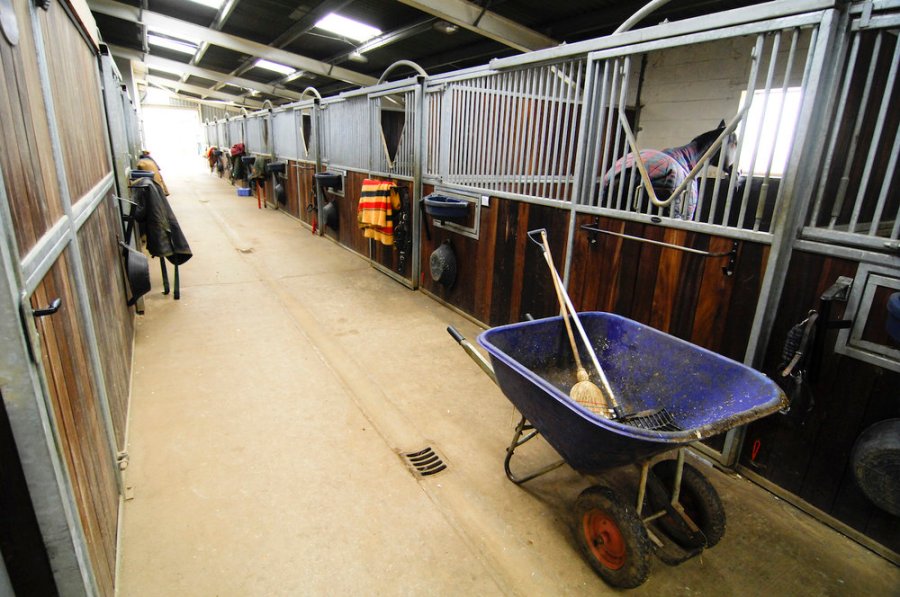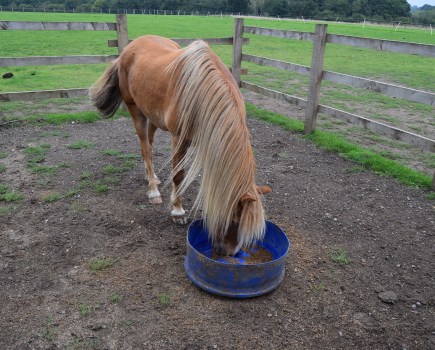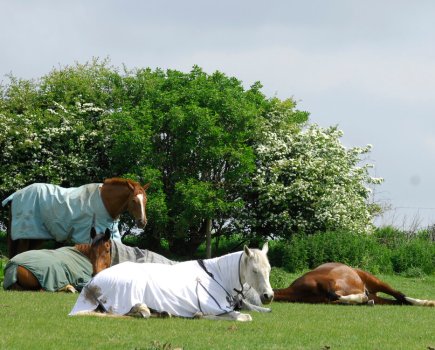Winter is the time of year when a horse may be stabled for long periods of time, due to freezing temperatures and wet, boggy ground making fields unusable. When taking care of a horse who is stabled in winter, it is especially important that their environment allows them to behave as naturally as possible.
Easier said than done, you might think, so vet Aoife Clark has shared the following advice for making sure your stable block is as healthy a place as possible for a horse to live in this winter.
Muck out well
Once upon a time, deep littering was the trend, with some horses standing on two feet of bedding by the end of the winter. However, times have changed and this way of managing beds is not as popular as it once was.
“Owners love to see their horse on a deep straw or shavings bed with crisp lines and corners,” says Aoife. “But this isn’t the ideal situation as parasites and bacteria can breed more easily the thicker the bed. Also, ammonia from urine is toxic and can cause serious respiratory issues, so it’s best to get rid of as much bedding as possible every day.”
Aoife suggests a well-drained rubber mat system is the preferred option: “With matting your horse only needs a small amount of shavings in one corner to encourage them to urinate. This can literally be swept out a couple of times a day and new bedding put in. Whatever you decide, absorbency of bedding is a key consideration.
“Most horses are more than happy to lie on rubber matting and often choose the mats over any bedding. Even if you can’t bring yourself to use such a small amount of bedding, rubber matting with appropriate bedding is still the better option.”
Keep your equipment clean and tidy
Simple things, such as scrubbing out your feed and water bowls thoroughly, can go a long way to keeping your horse healthy.
“Clean everything at least once a week using a safe disinfectant,” Aoife suggests. “Go the extra mile and soak your haynets in disinfectant too, remembering to rinse everything thoroughly before using. Even keeping the yard tools clean can help.”
A general clean of the stable and its surroundings is something to add to the list as it’s really important to keep it as dust-free and clear of bacteria as possible. Get rid of cobwebs and the dust that builds up on general surfaces, and disinfect the floors regularly. You may need to enlist the help of a vacuum cleaner to get to the roof.
“Equine asthma is a growing issue; to help prevent it, keep dust levels to a minimum, including storing hay and bedding away from the horses and keeping the stables ventilated,” says Aoife. “Even on the coldest of days keep as many doors and windows open as possible and add an extra rug if needed.”
Make the most of daylight
Nobody likes to spend their days in the dark, and it’s the same for your horse, so leave doors open wherever possible (horses are less worried about drafts and the rain that you are) to let daylight in. If necessary, put the lights on when you leave in the morning, especially if your horse is stabled in a barn, which tend to be darker.
A better option, but perhaps not as easy to achieve, is to install a clear plastic panel in the stable roof. This lets in natural light, which is important for stimulating the production of more vitamin D.
Enrich your horse’s environment
All this scrubbing and cleaning is great for your horse’s physical health, but they don’t care how shiny their environment is. What they’re concerned about is feeling secure, happy and confident in their surroundings.
“We know that horses are herd animals, and even though they have been domesticated since around 3000 BC, their basic needs as a wild animal haven’t gone away,” explains Aoife. “I find that the bigger the yard, the more content the horse. It seems that the busier it is, the better, as the horses have something to watch and be interested in.”
Horses need the company of other horses and it’s important they can see their friends.
“What is equally important is that they can touch each other,” says Aoife. “But sadly many stable blocks don’t allow for this. Barns with bars between stalls give horses the best chance of socialising.”
If it’s safe to do so, it may be worth walking your horse around the yard to give them a chance to speak to their friends on a daily basis if touching and smelling each other is not possible.
“Boredom is the other factor owners need to address. Horses who show vices, such as box walking or weaving, usually started this behaviour because they were bored or stressed. They may need more hay than normal, which can be soaked if weight gain is a problem. And try putting the radio on. There’s no research I know of to say this does any good, but horses do seem to like it.”
Use essential oils
“Essential oils can be useful over winter to help keep your horse relaxed and in good health,” says animal aromatic practitioner Dena Schwartz. “Try adding a few drops of their chosen oil onto a flannel or cloth and hang it in the stable, or add a few drops into a spray bottle of water and use it to spritz the stable to freshen the air and offer therapeutic effects.
“Let your horse sniff any potential oils from the bottle and watch his reactions to see if he likes it. If they turn away then accept that as a no thank you. If they keep inhaling it or mouthing at the bottle that’s a positive reaction and you are good to go.”
The following oils are safe to try:
- Rose – this is particularly lovely for mares as it balances hormones, and offers calming and comforting effects.
- Frankincense – this is very powerful for alleviating fear and anxiety, so is good for a nervous horse. It also helps open the airways, so is ideal for those with respiratory issues.
- Eucalyptus and tea tree – these are wonderful as anti-bacterial and anti-viral agents.
- Mandarin – this is often chosen by young horses for its calming and soothing properties.









